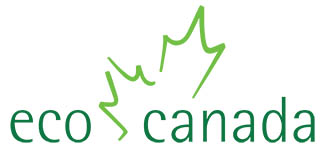Prosperity Project’s Fifth Annual Report Card Finds Canada’s Leadership Pipeline for Women is Shrinking
Calgary, AB, September 9, 2025 — The Prosperity Project today released its 2025 Annual Report Card on Gender Equity and Leadership (ARC 2025) presenting the most comprehensive analysis to date of women’s representation in leadership across Corporate Canada. ARC 2025 tracks trends since 2021 and reveals Canada’s leadership pipeline for women is shrinking.
ARC 2025 also shows the leadership gains for some women have not extended to other groups. For example, the reports finds that Indigenous, Black, 2SLGBTQIA+ and disabled women remain significantly underrepresented across senior leadership positions in Canada.
With economic pressures, shifting workplace norms and recent pushbacks against DEI programs threatening hard-won progress, the ARC makes a compelling case for urgent, evidence-based action from Corporate Canada.
Drawing on data from companies listed in the FP500 spanning nine major industries, the report offers a rare longitudinal view of women’s representation at four levels of leadership: Corporate Directors, Executive Officers, Senior Management and the pipeline to Senior Management. It also disaggregates results by identity, including Indigenous women, Black women, women of colour, women with disabilities and 2SLGBTQIA+ women.
“Canada’s economic prosperity depends on ensuring that women across every background and community can thrive and lead,” said Julie Savard-Shaw, Executive Director of The Prosperity Project. “Our 2025 data shows progress is possible, but it is neither guaranteed nor equitably shared. Some women are rising, but too many are being left behind.”
Key Findings
- Overall Representation: Women now hold 43.4% of leadership roles, up from 40.5% in 2021, though still well below the 2022 peak of 50.9%
- Executive Officer Roles: Women’s representation rose from 31.2% in 2021 to 40.6% in 2025, with strong gains for Black women and women of colour, but steep declines for Indigenous women and women with disabilities
- Leadership Pipeline Decline: Women in “next-up” roles—direct reports to senior management—dropped from 54.5% in 2022 to 45.3% in 2025, raising alarms about future sustainability
- Board Representation: Corporate director roles remain stagnant at 37.4% women overall, with far lower representation for Indigenous women (1.0%), Black women (2.5%), women with disabilities (1%), and 2SLGBTQIA+ women (1%)
- Uneven Progress by Industry: Professional Services and Real Estate show stronger pipelines for Women of Colour, while Manufacturing and Mining show near absence of underrepresented groups at all leadership levels
Progress Uneven Across Equity-Deserving Groups
- Black Women: Representation in executive roles grew from 0.8% in 2021 to 5.1% in 2025—important progress, but with limited support in the pipeline
- Indigenous Women: Representation dropped sharply from 3.1% in 2021 to 1.0% in 2025 overall, with just 0.5% at the executive level
- Women with Disabilities: After peaking at 5.0% representation in 2024, numbers fell to 3.4% in 2025, reflecting reduced workplace flexibility
- 2SLGBTQIA+ Women: Representation remains minimal, with fewer than 1.0% of Board
- Women of Colour: Nearly doubled their representation between 2021 and 2025, rising from 9.7% to 19.7%. They now comprise 21.7% of women in Executive Officer roles, up from just 6.8% in 2021
“To truly achieve equity, we need intersectional strategies: ones that recognize the unique barriers faced by Indigenous women, Black women, Women of Colour, women with disabilities and 2SLGBTQIA+ women,” said Savard-Shaw. “The report card raises alarm bells about who will be at the decision-making tables in Corporate Canada over the next decade.”
The Pipeline Problem
Social, economic and workplace shifts since 2022 have made it harder for women to advance – especially equity-deserving women. Rising political polarization and backlash to DEI efforts are creating “caution” among corporate leaders, which risks weakening investment in inclusive talent strategies.
While executive-level numbers show progress in some areas, the underlying leadership pipeline is weakening. Women’s representation in direct-report roles to senior management fell nearly 10 percentage points since 2022. This decline threatens to undermine future progress and risks creating a leadership vacuum in Corporate Canada. Without more women in pipeline to senior leadership roles, executive gains may prove short-lived.
“Equity is not charity, it’s strategy,” said Savard-Shaw. “Organizations that build inclusive leadership teams will not only reflect the Canada we live in but will also gain the resilience and creativity to thrive in a complex world.”
About ARC 2025
Now in its fifth year, the Annual Report Card on Gender Equity and Leadership, is based on voluntary, self-reported data from 73 FP500 companies. It analyzes representation across four tiers of leadership and disaggregates by key identity groups. For the first time, industry-specific benchmarking reports and a companion Best Practices Guide will also be available at canadianprosperityproject.ca
Media Contact:
Andrew Perez
andrew@andrewperez.ca
416-454-7171
NT5
This article comes from NationTalk:
https://nationtalk.ca
The permalink for this story is:
https://nationtalk.ca/story/prosperity-projects-fifth-annual-report-card-finds-canadas-leadership-pipeline-for-women-is-shrinking
Comments are closed.





















